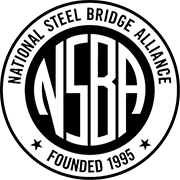National Steel Bridge Alliance
Steel Bridge Durability and Preservation
Short span steel bridges allow for a variety of cost-competitive corrosion protection strategies. Uncoated weathering steel (UWS), using a single coat of inorganic zinc primer (SIOZ), and hot-dipped galvanized are all proven strategies that provide long life, are durable, and keep costs low for this span range.
Smart Design for Durability
The best way to prevent deterioration on steel bridges is to eliminate deck joints! In fact, for many short span steel bridges, deck joints are not needed at all.
If steel girders are discontinuous, consider using link slabs to eliminate deck joints. Find out more about designing link slabs in Section 3.6.9 of the 2018 AASHTO LRFD Guide Specifications for Accelerated Bridge Construction. Also, check out “Piece By Piece,” published in the September 2014 issue of Modern Steel Construction.
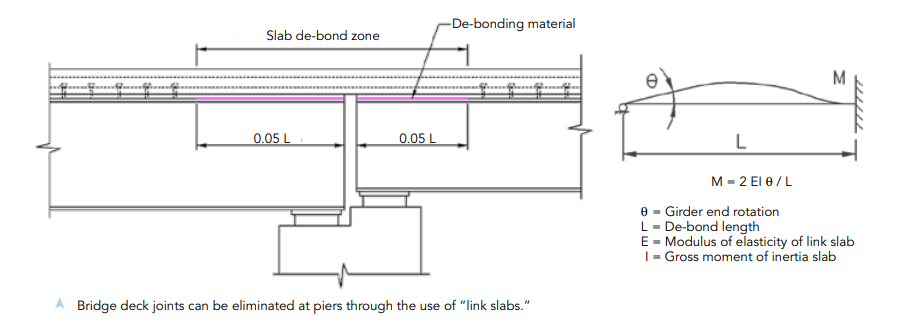
Integral and semi-integral abutments are also useful in eliminating the joints at bridge ends. AISI's Integral Abutments for Steel Bridges is a good reference for this topic.
Proper detailing of steel bridges is crucial for reducing deterioration. The AASHTO/NSBA Collaboration task group on corrosion protection is currently working on a document to address proper detailing. In the meantime, refer to section 2.5 of the Uncoated Weathering Steel (UWS) Reference Guide because most detailing practices for UWS are valid for other corrosion protection strategies.
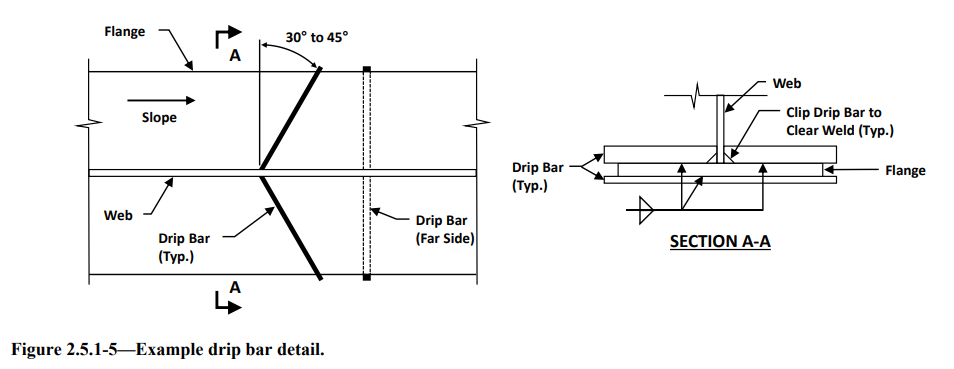
Source: Uncoated Weathering Steel (UWS) Reference Guide
Bearings can be prone to deterioration, especially if the incorrect bearing choice is used for the circumstances. NSBA recommends the use of elastomeric bearings wherever possible to prevent deterioration. Elastomeric bearings are likely suitable for many short span steel bridges.
When evaluating elastomeric bearings for short span bridges, reference the AASHTO/NSBA Collaboration's S9.2 Steel Bridge Bearing Design and Detailing Guidelines. This document provides information about how to reduce the chance of deteriorated bearings.
Economical Options for Protection
It is important to choose the right durability strategy for the steel bridge in question. We have a durable solution for every need and environment.
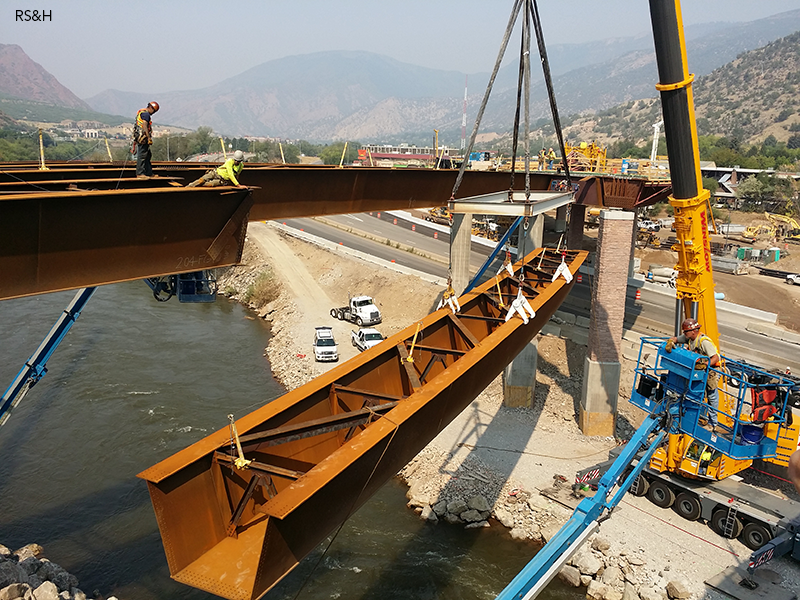
The Grand Avenue Bridge in Glenwood Springs, Colo. incorporated
uncoated weathering steel. It won a Prize Bridge Award in 2020.
NSBA recommends starting with UWS first because it is the lowest-cost option and works for the majority of environments and circumstances in the nation. Find out more about this strategy in NSBA's new Uncoated Weathering Steel (UWS) Reference Guide, which summarizes the best practices for bridges that implement UWS.
However, we recognize that UWS is not suitable for all bridges. Thus, we recommend evaluating the next best alternative. While a duplex coating system (typically thermal spray or hot-dipped galvanizing in combination with a paint system) has a time and a place (usually in very extreme environments), it should not be the first system you consider due to the increased cost.
Using SIOZ as the sole durability system is also gaining popularity. NSBA conducted a synthesis study with Modjeski and Masters, and this system is showing promising results. Additional guidance is forthcoming, but the report Single Coat Inorganic Zinc Protection for Steel Bridges summarizes the results of the synthesis study.
Hot-dipped galvanizing (HDG) on steel bridges is a very effective system, and its cost is competitive when the steel girders fit into a galvanizing tank. Find out more about this system in the AASHTO/NSBA Collaboration's S8.3 Specification for the Application of Hot-Dipped Galvanizing on Steel Bridges.
For more information, see Volume 19 of the NSBA Steel Bridge Design Handbook for an in-depth reference on durability and various strategies available.
Unmatched Repairability and Restoration
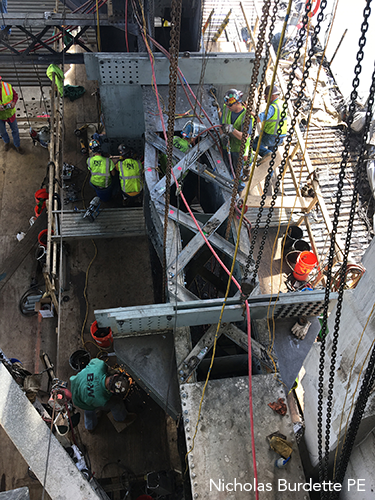
Crews heat-straighten a member on the Liberty Bridge after a
construction fire caused damage. The Liberty Bridge won a Prize
Bridge Award in 2020 for resilience.
Steel girders and beams are resilient when it comes to overcoming damage from collisions. See below for restoration resources:
- Most states have standard repair plans on hand for emergency situations. For example, the Ohio DOT has this set of Collision Repair and Heat Straightening Notes.
- In 2023, the FHWA published a technical manual for heat straightening, heat curving, and cold bending for the fabrication or repair of steel bridge components.
- Liberty Bridge in Pittsburgh won Prize Bridge Award in 2020 for resilience--in part due to heat straightening of main truss compression chords caused by a construction fire. Read the PennDOT report to find out more.
- Similarly, the Kansas DOT used heat straightening to repair damaged girders after a collision in 2018. See photos of the repair process.
- Browse the photos in this presentation of heat straightening repairs to a steel truss bridge in Minnesota.
Encapsulated beam end study:
- Design and Construction of UHPC-Based Bridge Preservation and Repair Solutions, FHWA, 2022
- Guidelines for the Utilization of Ultra-High Performance Concrete in the Rehabilitation of Steel Bridge Girder Ends, CTDOT, 2022
- UHPC Beam End Repair Details, CTDOT, 2022
In the deconstruction of I-40 in Oklahoma, it was determined that 2060 steel beams were suitable for repurposing. That equates to approximately 350 50-ft bridges with the county engineers being the primary benefactor.
- "Old Crosstown Expressway beams find homes throughout Oklahoma," The Oklahoman, 2013
- "Salvaged I-40 Crosstown Expressway beams are helping build county crossings across Oklahoma," The Oklahoman, 2022
